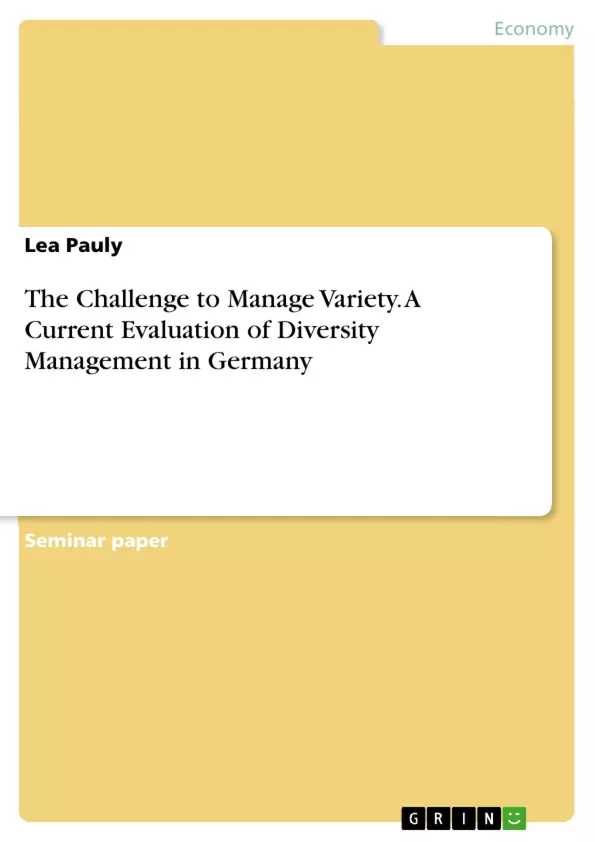The present work gives an overview of the current situation of diversity management in Germany and brings together the most comprehensive base of knowledge. The aim of this study is to gather the state of research on theoretical approaches, organizational best practice and practical implementation.
To rate the current implementation in Germany, companies, especially all 30 DAX-listed companies, were evaluated and Diversity Charter signatures and the appointment of a diversity manager were used as central evaluation criteria. Furthermore, a deductive content analysis examined components of implemented diversity practices. The Diversity Charter was signed by 28 companies and 29 have a person in charge as a diversity manager. This is a slight increase over the previous year, but the number of new signatories in total shows a step backwards.
The content analysis shows that almost all DAX 30 companies have established a strategic integration and a focus on themes of gender and cultural diversity were identified. The results are discussed, taking into account theoretical findings, and implications for the business environment are added.
Inhaltsverzeichnis (Table of Contents)
- Abstract
- Introduction
- Theoretical Approaches to Manage Diversity
- Practical Implementation and Challenges
- Organizational Best Practice
- Institutional Anchoring in the German Sector
- Methodology
- Step 1: Analysis of Diversity Charter
- Step 2: Content Analysis of Websites
- Discussion
- Directions for Future Research
- References
Zielsetzung und Themenschwerpunkte (Objectives and Key Themes)
This study aims to provide a comprehensive overview of the current state of diversity management in Germany, analyzing theoretical approaches, organizational best practices, and practical implementation. It explores how German companies, particularly DAX-listed companies, are integrating diversity management principles and practices. The study specifically examines the adoption of the Diversity Charter and the appointment of diversity managers as key indicators of implementation.
- Theoretical frameworks for managing diversity
- Practical implementation of diversity management strategies in German companies
- Evaluation of diversity management practices through the lens of the Diversity Charter and the appointment of diversity managers
- Analysis of the role of gender and cultural diversity in organizational practices
- Implications for the business environment and future directions for research
Zusammenfassung der Kapitel (Chapter Summaries)
The introduction provides an overview of the growing importance of diversity management in the context of demographic change, globalization, and the increasing number of refugees in Germany. It highlights the need for companies to create inclusive working environments that promote diversity and combat prejudice.
The chapter on theoretical approaches to manage diversity examines different frameworks and models, including the interactional model of Taylor Cox, which emphasizes the importance of individual, group, and organizational factors in creating a diverse and inclusive workplace.
The chapter on practical implementation and challenges delves into the practical considerations of implementing diversity management strategies, including the development of policies, the creation of inclusive cultures, and the potential barriers to effective implementation.
Schlüsselwörter (Keywords)
This study focuses on the key concepts of diversity management, including theoretical approaches, practical implementation, organizational best practices, and the Diversity Charter. It examines the role of diversity managers, gender diversity, cultural diversity, and the business environment in Germany. The study also considers the implications of demographic change, globalization, and the increasing number of refugees on diversity management practices.
- Quote paper
- Lea Pauly (Author), 2016, The Challenge to Manage Variety. A Current Evaluation of Diversity Management in Germany, Munich, GRIN Verlag, https://www.grin.com/document/321196



